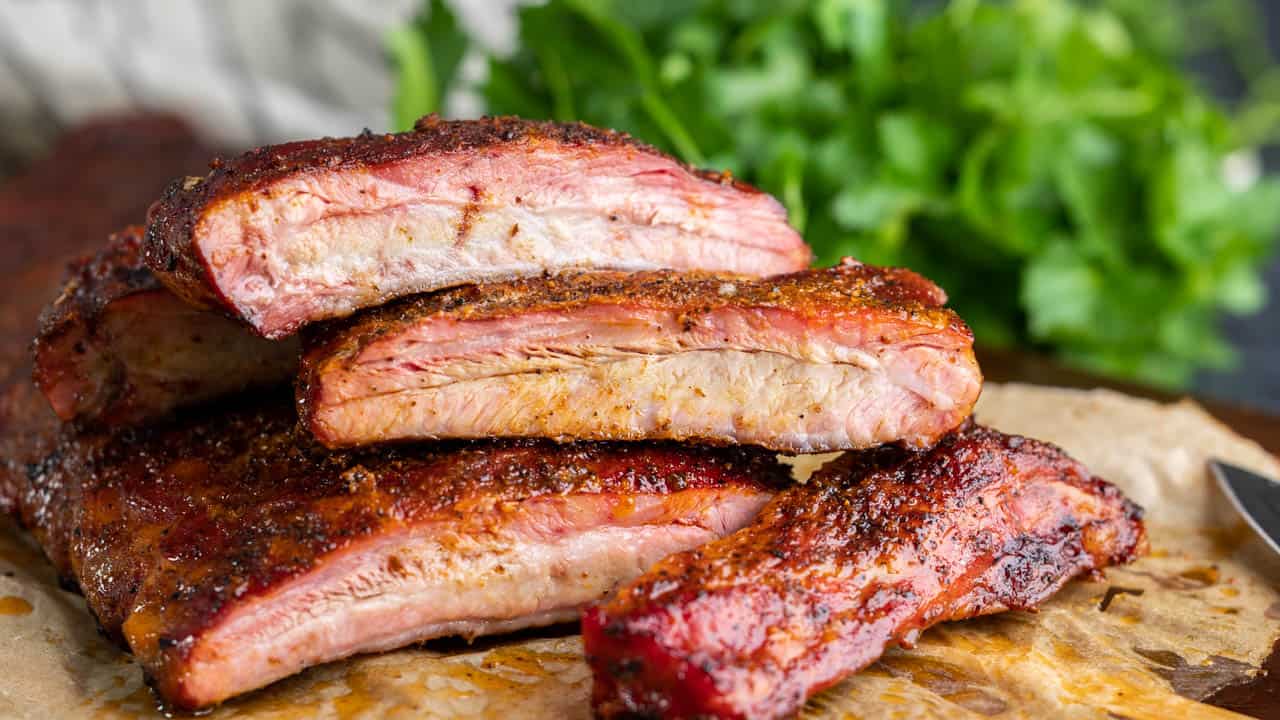Capture the essence of a summer barbecue with this step-by-step guide to mastering smoked ribs. Perfect for any cook, beginner or advanced!
The delightful combination of tender pork ribs, smoky aroma, and sweet, tangy sauce is a hallmark of summer barbecues and family gatherings. Making your own smoked ribs at home is an endeavor that is as rewarding as it is delicious. Whether you’re a beginner in the kitchen or a seasoned home cook, mastering the art of smoked ribs gives you the power to create a memorable dining experience right in your own backyard.
Frequently Asked Questions
Absolutely, feel free to use baby backs, spareribs, or St.Louis-style ribs based on your preference.
No, it’s optional, but removing it helps the smoke and seasonings penetrate better into the meat.
Yes, if you’re short on time or want to try a different flavor profile, a store-bought rub works just as well.
Substitutions
- Mustard: If you’re out of mustard, honey or a light brushing of oil can serve as a binder for the rub.
- Apple Juice and Apple Cider Vinegar: You can replace these with an equal amount of white grape juice and white vinegar.
Wood/Pellet Options
The choice of wood or pellets significantly impacts the flavor profile of your smoked ribs.
- Hardwoods are typically favored for their slow, consistent burn and robust flavors.
- Hickory is a classic choice, imparting a strong, smoky flavor that pairs well with the richness of the ribs.
- For a milder, sweeter note, applewood or cherrywood are excellent options.
- Mesquite, while intense, can be an exciting choice for those who love a deep, hearty smokiness.
- If you’re using pellets, consider blends specifically designed for pork that incorporate some of these wood varieties.
Remember, the aim is to complement the taste of your ribs without overpowering it, so choose your wood or pellets accordingly.
Troubleshooting
Ribs are too dry: This often happens when the cooking temperature is too high or the ribs cook for too long. Make sure to keep a steady temperature and keep an eye on the ribs during the final hours of smoking.
Fluctuating smoker temperature: Try to limit the number of times you open the smoker. Each time you open it, heat escapes, causing fluctuations in temperature.
Ribs are tough: Ribs become tender from slow cooking at low temperatures. If your ribs are tough, they may not have cooked long enough.
Understanding Your Smoker or Grill
Managing a consistent temperature is key to successful smoking. If you have a smoker or pellet grill, maintain a steady temperature of around 250 degrees Fahrenheit. If you need to make this on a grill, we have you covered with complete instructions here!
How to Tell When Ribs are Finished Cooking
Preferences for rib doneness can vary from person to person. Some enjoy their ribs completely falling off the bone, while others prefer a bit of a tug. No matter your preference, ensuring tenderness is key to a satisfying rib experience. If you feel the ribs aren’t tender enough, don’t hesitate to spritz them and let them continue cooking for an additional hour. The cooking time can be influenced by factors such as the thickness of the ribs and the amount of fat marbling. To be precise, you can use a meat thermometer; an ideal internal temperature for perfectly cooked ribs is between 190 to 200 degrees Fahrenheit.
